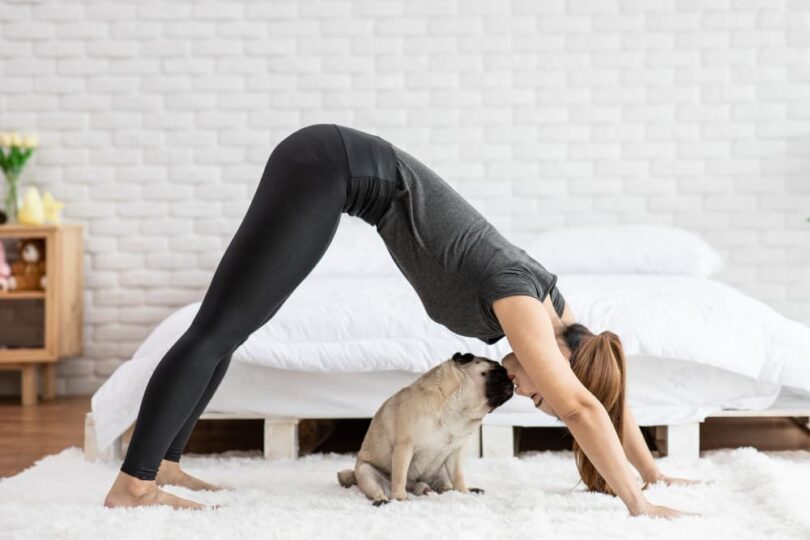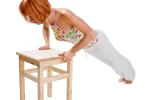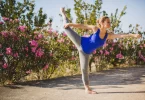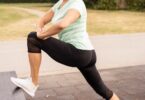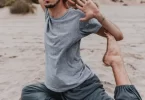Table of Contents
Introduction
The Downward-Facing Dog (Adho Mukha Svanasana) is a fundamental pose in yoga that offers a blend of stretching, strengthening, and calming benefits. Whether you’re new to yoga or a seasoned practitioner, mastering this pose can greatly benefit your overall practice. In this guide, we’ll walk you through everything you need to know about the Downward Dog, including how to perform it, its benefits, common issues, and more. Let’s dive into this transformative yoga posture.
Introduction to Downward Facing Dog
Downward-facing Dog, known in Sanskrit as Adho Mukha Svanasana, is one of the most recognizable yoga poses. This pose resembles a dog stretching forward, and it’s a staple in many yoga sequences. Often used as a transitional pose, it helps lengthen and strengthen various parts of the body.
Importance in Yoga Practice
Downward Facing Dog is a cornerstone of yoga practice for several reasons. It helps build strength in the arms, shoulders, and legs while stretching the hamstrings, calves, and spine. Moreover, it enhances circulation and can be a restful pose when held for several breaths.
Origin and Meaning of the Name “Adho Mukha Svanasana”
The name “Adho Mukha Svanasana” comes from the Sanskrit words “Adho” meaning downward, “Mukha” meaning face, and “Svana” meaning dog. Thus, it translates to “Downward-Facing Dog.” This name reflects the pose’s shape, which resembles a dog stretching its front legs and lowering its head.
How to Perform Downward Facing Dog
Learning to do Downward Facing Dog correctly is essential for reaping its full benefits. Here’s a detailed guide on how to get into this pose and perfect it over time.
Step-by-Step Guide
- Start on Your Hands and Knees: Begin on your mat in a tabletop position, with your wrists aligned under your shoulders and your knees under your hips.
- Spread your fingers wide. Press into your palms and lift your knees off the ground, sending your hips up and back.
- Straighten Your Legs: Slowly straighten your legs as much as possible without locking your knees. Your body should form an inverted V shape.
- Lengthen Your Spine: Focus on elongating your spine by pressing your hips back and reaching your heels toward the floor.
- Relax Your Head and Neck: Let your head hang freely, keeping your ears aligned with your upper arms.
Common Mistakes and How to Avoid Them
- Rounding the Back: Push through your hands and engage your core to ensure your spine stays long and straight.
- Shoulders Too Close to Ears: Draw your shoulders away from your ears to create space and avoid tension.
- Heels Off the Ground: It’s okay if your heels don’t touch the ground initially; focus more on the length of your spine.
Modifications and Variations
To make Downward Facing Dog accessible for everyone, consider these modifications:
- For Beginners: Bend your knees slightly to avoid strain on your hamstrings and lower back.
- For Advanced Practitioners, Try lifting one leg at a time for a one-legged Downward-Facing Dog, increasing the stretch and challenge.
- Using Props: Place a block under your hands or use a strap around your arms to maintain alignment.
Each of these variations helps accommodate different levels of flexibility and strength, making Downward Dog beneficial for all practitioners.
Benefits of Downward Facing Dog
Downward-facing Dog (Adho Mukha Svanasana) offers numerous physical and mental benefits. This pose is a powerhouse in any yoga practice, providing a full-body workout and a chance to reset and recharge.
Physical Benefits
Strengthening Muscles
Downward Facing Dog is excellent for building strength. It targets multiple muscle groups, including the arms, shoulders, legs, and core. By holding this pose, you’re working to develop endurance and stability in these areas.
Improving Flexibility
This pose is also a great way to increase flexibility, especially in the hamstrings, calves, and spine. As you press your heels toward the floor and lift your hips, you’ll feel a deep stretch that can help improve your overall range of motion.
Enhancing Balance
Balancing in a Downward-Facing Dog requires engaging various muscle groups simultaneously. This coordination helps improve overall balance and body awareness, which can be beneficial in yoga and everyday activities.
Mental Benefits
Stress Relief
One of the key mental benefits of the downward-facing dog is its ability to relieve stress. The pose’s inverted nature helps calm the mind and reduce anxiety, providing a sense of relaxation and peace.
Calming the Mind
By focusing on your breath and the alignment of your body, Downward Facing Dog can help quiet your mind and enhance mental clarity. This can be particularly useful during stressful times or when you need a mental reset.
Enhancing Focus
Holding this pose requires concentration and mindfulness. Practicing Downward Facing Dog regularly can help improve your ability to focus and stay present, both on and off the mat.
Incorporating Downward Facing Dog into your yoga routine can bring numerous benefits, from building physical strength and flexibility to enhancing your mental well-being. It’s a versatile pose that offers something for everyone, making it a cornerstone of any yoga practice.
Common Issues and Solutions
Practicing Downward Facing Dog (Adho Mukha Svanasana) can sometimes present challenges, especially for beginners. Understanding these common issues and how to address them can help you improve your practice and prevent discomfort.
Addressing Common Challenges
Wrist Pain
Wrist pain is a frequent complaint among those new to Downward Facing Dog. This can be due to improper weight distribution or lack of strength in the wrists.
- Solution: Distribute your weight evenly between your hands and feet. Engage your core and legs to take pressure off your wrists. Additionally, you can place a folded mat or towel under your wrists for extra support.
Tight Hamstrings
Tight hamstrings can make it difficult to straighten your legs and lower your heels to the floor in this pose.
- Solution: Bend your knees slightly to allow your spine to lengthen. Over time, as your flexibility improves, you can gradually work towards straightening your legs and lowering your heels.
Shoulder Discomfort
Shoulder discomfort can arise if you’re not engaging your shoulders correctly or if they’re too tense.
- Solution: Draw your shoulders away from your ears and rotate your upper arms outward. This creates space around the neck and helps relieve tension in the shoulders.
Tips for Improvement
Enhancing Alignment
Proper alignment is key to maximizing the benefits of Downward Facing Dog and preventing injury.
- Tip: Keep a straight line from your wrists to your hips. Engage your core and press firmly through your hands and feet to maintain stability.
Increasing Duration
Holding the pose for longer periods can help build strength and endurance.
- Tip: Start by holding the pose for a few breaths and gradually increase the duration as you become more comfortable. Remember to breathe deeply and evenly.
Integrating with Other Poses
Incorporating Downward Facing Dog into a sequence can help you experience its benefits in different contexts.
- Tip: Use Downward Facing Dog as a transitional pose between standing and floor poses. It can also serve as a resting pose during more intense sequences.
Addressing these common issues and following these tips can improve your downward-facing dog practice, making it more effective and enjoyable. Remember, consistency and mindful practice are key to progress in yoga.
Related Article: Keep Your Mat Safe with Gaiam Mat Bag
Advanced Techniques and Deepening the Practice
Once you’ve mastered the basics of Downward Facing Dog (Adho Mukha Svanasana), you can start incorporating advanced techniques to deepen your practice. These variations and techniques can help you explore new aspects of the pose and challenge your body in different ways.
Incorporating Advanced Variations
One-Legged Downward Facing Dog
Adding a leg lift to your Downward Facing Dog can intensify the stretch and build additional strength.
- How to Do It: From Downward Facing Dog, lift one leg towards the ceiling while squaring your hips. Hold for a few breaths, then switch legs. This variation increases the challenge for your balance and core stability.
Downward Facing Dog Twist
This variation adds a twisting motion to the pose, which can help stretch the sides of your body and improve spinal mobility.
- How to Do It: From Downward Facing Dog, reach your right hand to touch your left ankle, twisting your torso slightly. Hold for a few breaths, then switch sides. This twist can deepen the stretch in your back and shoulders.
Downward Facing Dog to Plank Flow
Flowing between Downward Facing Dog and Plank Pose can help build strength and fluidity in your practice.
- How to Do It: From Downward Facing Dog, shift forward into Plank Pose, aligning your shoulders over your wrists. Hold for a breath, then push back into Downward Facing Dog. Repeat this flow several times to engage your core and upper body.
For more advanced techniques, you can refer to Ekhart Yoga.
Enhancing Mind-Body Connection
Breathing Techniques
Focusing on your breath can help you stay present and deepen your practice.
- Techniques: Practice deep breathing, even throughout the pose. Inhale as you lengthen your spine, and exhale as you press your heels toward the ground. This mindful breathing can enhance your relaxation and focus.
Visualization
Using visualization can help you connect more deeply with the pose and its benefits.
- How to Visualize: Imagine your body forming a straight line from your wrists to your hips, and visualize energy flowing through your spine and out through your heels. This mental imagery can help you maintain alignment and stay focused.
Conclusion
Downward-facing Dog (Adho Mukha Svanasana) is much more than just a pose; it’s a foundational element in yoga that combines strength, flexibility, and mindfulness. Whether you’re a beginner learning the ropes or an advanced practitioner looking to deepen your practice, this pose offers something valuable for everyone.
We’ve covered the essential steps to perform the pose correctly, highlighted its numerous physical and mental benefits, and addressed common issues you might face along the way. By incorporating modifications and advanced techniques, you can tailor the pose to suit your needs and abilities.
Remember, consistency and mindful practice are the keys to mastering Downward Facing Dog. Keep exploring the pose, listen to your body, and enjoy the journey of improvement and self-discovery. With time and dedication, you’ll find that this iconic yoga pose becomes a rewarding part of your practice, contributing to your overall well-being and yoga journey.

